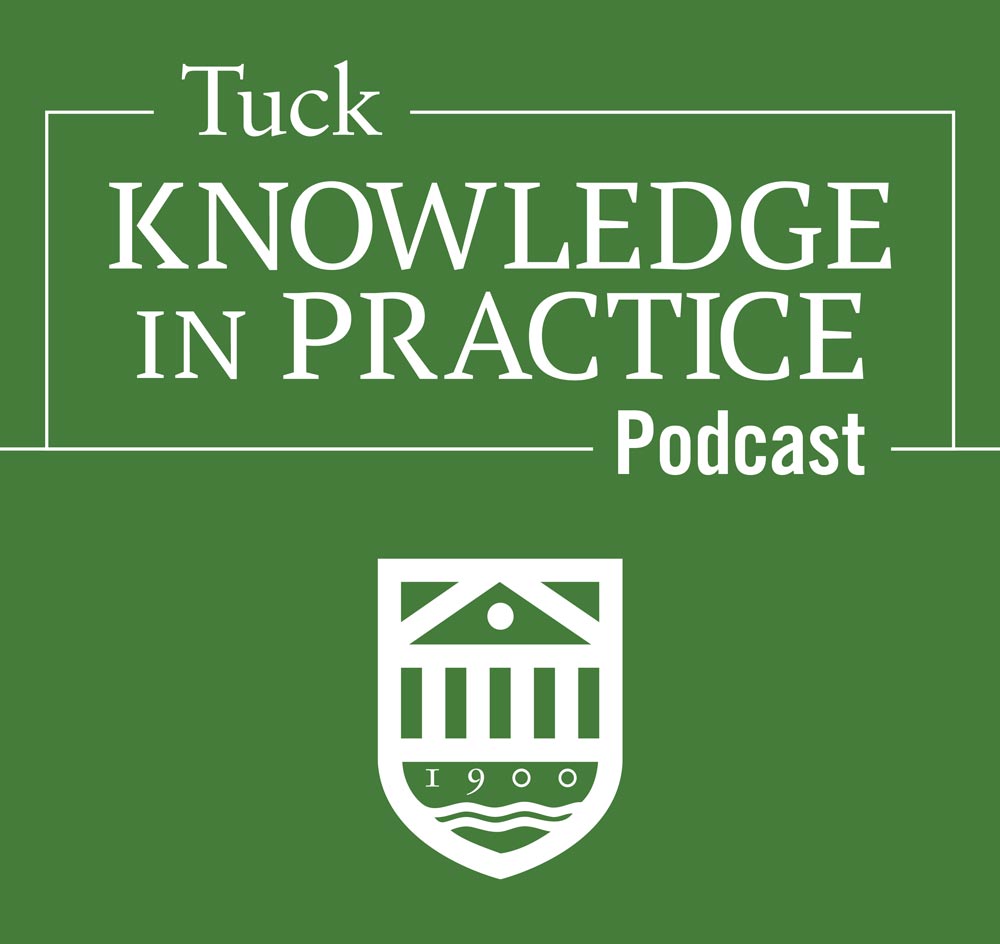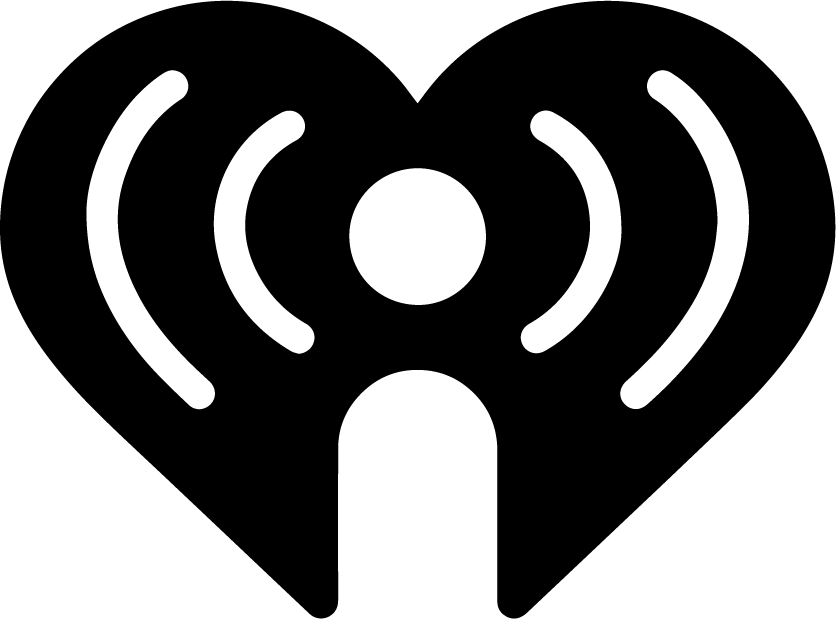Tuck Knowledge in Practice Podcast: The Science of Tipping
In episode two of the Tuck Knowledge in Practice podcast, we welcome guest Laurens Debo, the C.V. Starr Professor of Operations Management at Tuck, who helps demystify the tipping conundrum.
According to a recent study reported in USA Today, Americans these days spend nearly $500 per year on tipping at restaurants and bars. More than one-quarter of those surveyed for the study said they often felt forced to tip more than they wanted to, which isn’t surprising given that tipping percentages have steadily increased over the last hundred years. And yet, tipping is a completely voluntary behavior. Moreover, even though it accounts for more than $50 billion in the U.S. economy and is the primary source of income for millions of restaurant workers, it’s a behavior we know very little about.
In a new working paper, Tuck professor Laurens Debo, together with Ran I. Snitkovsky of Coller School of Management, Tel Aviv University, tackle the tipping conundrum from an analytical point of view. The paper, “A modeling framework for tipping in the presence of a social norm,” details a mathematical model that can help explain why people tip and why, perhaps, tipping isn’t the most efficient way to pay servers for their work.
Listen Now
Our Guest

Transcript
[This text may not be in its final form and may be updated or revised in the future. Accuracy and availability may vary. The authoritative record of the Tuck Knowledge in Practice Podcast is the audio record.]
Speaker 1: Come on, throw in a buck.
Speaker 2: I don't tip.
Speaker 1: You don't tip.
Speaker 2: No, I don't believe in it.
Speaker 1: Let me just get this straight. You don't ever tip, huh?
Speaker 2: I don't tip because society says I have to. All right. I mean, I'll tip if somebody really deserves a tip, if they really put forth the effort, I'll give them something extra. But I mean, this tipping automatically. It's for the birds.
[Podcast introduction and music]
Kirk Kardashian: That was the actor, Steve Buscemi, playing the character Mr. Pink in the cult classic film Reservoir Dogs. Hey, this is Kirk Kardashian, and you're listening to Knowledge in Practice, a podcast from the Tuck School of Business at Dartmouth. In this podcast, we talk with Tuck professors about their research and teaching and the story behind their curiosity. How do you feel about tipping? How much do you tip? Do you tip more for excellent service? Should we just abolish tipping and raise the minimum wage for waitstaff? All these questions come up in a new paper by my guest, Laurens Debo, professor of operations management at Tuck. Laurens is an award-winning scholar whose research focuses on the behavior of consumers and providers in different service settings. On the consumer side, he investigates how strategic consumer behavior shapes the demand for services. On the supply side, he studies the management of discretionary services whose value to the consumer increases with the actual service time. Just to give you an example of his work, in 2021, Laurens won a research award for creating a model that could reduce wait times in restaurants and other service settings at Tuck. He is the area chair of the Management and Service Operations Group, and he teaches the Elective Service Operations Management.
Okay, Laurens Debo, thank you for making some time for us to talk about your paper. The title is a modeling framework for tipping in the presence of a social norm. We’re talking about tipping here in restaurants and in bars and places like that, and I know tipping is a topic that a lot of people have strong feelings about. I think people have probably noticed tipping becoming more pervasive and prevalent practice when we go out to buy things either in restaurants and bars or also in coffee shops. And anytime that there's counter service. It seems to me anyway, that we're seeing opportunities to tip popping up in more and more places. And I read in your paper that tipping itself has evolved since it was introduced in the early 1900s. The amount that we tip has increased over the years from 10% through the 60s, and then it went to 15% through the 80s, and now we're up towards 20%. Was this evolution? Did this play a big part in why you decided to study tipping from an operations management perspective?
Laurens Debo: Well, first of all, thanks for having me. It's my pleasure. It's always my pleasure to talk with you and certainly to talk about tipping. I have been thinking and working on tipping for quite a while. And you mentioned the operations management perspective. In operations management is one important stream of literature, if you wish, that talks about pricing. And there is also an important stream of literature that talks about behavioral issues in operations. And so, it struck me, I was very surprised that we knew very little about tipping as a part of a behavioral part of the price, because you don't have to pay. So rational customers, they would never leave a tip. Why would you? Nobody is going to call the police if you don't tip. Yet, people do. And so, understanding that source of income for the firm or for the restaurants, which is a very important source to think about this as like 20% of the revenues, if you wish. That is very often used to offset labor costs. I thought this really deserves much more attention from researchers in my field operations management, that it has been received. And we do have some tools. So, what you say is true, the tipping norm has evolved slowly over time. And so that kind of indicates the difficulties of doing research on tipping, because tipping occurs in many industries like, taxicabs, restaurants.
And now there's a proliferation of tipping. Usually you don’t, you're not asked to tip. Now employers are now firms. They suggest you tip. So, there's many industries over long periods of time over decades. And as I said tipping is very behavioral. Also, some people tip for this reason to show gratitude. Some people tip because they tip. Some people have strong opinions about it. So, it is very, very hard to do research on tipping and what my co-author, Anne Snitkovsky from Tel Aviv University and I, what we try to do is to come up with a framework. In a framework, which is a mathematical framework, we can, if you wish, study ten years at a time. We can study the long term; we can study the short term. We can make very explicit assumptions about what type of behavior triggers tipping. So, what we want to do is with this framework is provide tools to create more clarity into tipping. And we think that other research methods are good, but having a mathematical framework allows us to address long term, short term and explain again, as I said, what the underlying assumptions are. And so, it's our hope that our framework will be picked up by other researchers also and will allow us to move towards a conversation that is slightly more rigorous.
Kirk: It’s really hard to have a rigorous conversation about something that's so variable and so kind of like amorphous. Some people have different opinions about it. Some people have different practices. There's different places people tip, right? People don't tip in other places. So that's why it's so hard to get like hard empirical data about it.
Laurens: Yeah. It's very hard. But there are, and I don't want to discount the existing empirical tipping research that is there. That research has given us lots of motivation and lots of inspiration to come up with some fundamentals. And we think, and during the review process of that paper, people kind of agree that there are two basic motivations for tipping. One is the pressure of a social norm that evolves in society. And so that norm is, if you wish, it's kind of the average of what everybody else is tipping. And, through various channels, we kind of are become aware that's what people do. And so, the fundamental behavioral reasons to tip is here is this ‘I don't want to stand out. Like, if everybody tips 20%, I don't want to be the person that tips 5%.’ So, that's like, a need to be conform with what everybody else does in society. And so that's the social norm. And that is more to do with the customer comparing themselves with other customers. So, if other customers tip that much I want to tip that much, too. I don't want to stand out, especially not on the negative side.
The second fundamental reason for which that we think based on the literature, empirical literature that we have read, is that people also tip because of they want to express emotions of gratitude towards the server that serves them, towards the person that waits at the table, or towards the cab driver. The human interaction is important. And what we are using in our theoretical framework is reciprocity. If I'm being served well, I will repay this back in kind. And so that goes back to fundamental behavioral economics. We think the fundamental thought here, is or experiments here is, people are being asked to split the dollar between yourself and a random other person. Rational theory would say you keep $0.99 for you, and you give the other person $0.01. Worldwide, this is behavior that is not observed. People keep less for themselves, and they give more. And so that's like reciprocity. And so, we think that is the second important driver that does not have to do with the customer. Me as a customer compared to the other customers. That's the social pressure. But me as a customer compared to a server.
Kirk: Huh. That's interesting. So, this reciprocity principle that you're talking about, it sounds almost like a form of altruism that we use.
Laurens: Exactly. Yeah, behavioral theories. I think about altruism, reciprocity. Yeah, that's all very similar as tipping.
Speaker 5: James Turner has been working at blue 44in Northwest since it opened four years ago. Positive feedback is abundant here. But Monday, one customer took generosity to new heights.
Speaker 6: And I was like, is this real?
Speaker 5: The customer and his friend ordered fried chicken gumbo and a beer. The beer and food were so satisfying, the customer reciprocated with a heaping portion of appreciation a $2,000 tip on a $93 bill.
Speaker 7: And I've never experienced anything.
Kirk: So tell us how you use those two justifications social norms and reciprocity to construct your model.
Laurens: Yeah. So, what we are doing, we are constructing a utility model. That is not the rational one because we introduced two behavioral deviations for rationality. Being altruistic or reciprocal is a behavioral deviation. So that's the first deviation. And the second deviation is the cost of deviating from a norm. But given that for the rest in the model, customers take rational actions. So, their utilities or the objective functions might not be rational, only caring about themselves. And they are behavioral. But given that all the customers in the model take rational actions, for a given price, they're going to decide whether to purchase the service or not. And when they purchase the service, given the behavioral costs, then they're going to determine the rational tip. So, for a given price, there's going to be certain demands that we can calculate. It's going to be a certain tip that on average will be given. And then what the firm will do, and the firm will choose a price that, given the customer behavior, maximizes the firm's profits. And so, once we have determined what the behavioral foundations are for tipping, all the rest just follows classical economic theory where everybody maximizes utilities and maximizes profits.
And we can construct a short run equilibrium, which is, how are we acting? How is everybody acting giving a certain norm? But we also can construct a long run equilibrium, where then we see, like if we start, for instance, with a norm of 5%, maybe the aggregate tip is going to be 6%. And so then in the next period, if everybody tips 6%, maybe the aggregate tip, if you assume this as a norm is going to be 7%. And so, what we are finding in the model is, is a long run equilibrium where if everybody believes that this is the norm, they act according to it, and the aggregate tip is then going to be equal to the norm. And so that's what really excites us in the research. We can we have a modeling framework that allows us to understand what the long run equilibrium is going to be. While in practice, this would be very, very hard to predict or even to measure or even to think about.
Kirk: So, your long run, equilibrium means that the tipping is going to kind of reach sort of a like a plateau.
Laurens: Exactly, yes. It's like if everybody believes that this is the norm, they act according to it and then they recreate the norm. So that's the idea.
Kirk: Okay. So, we're not going to be on some trajectory that's ultimately going to end us end up having us pay 50% tips.
Laurens: Well, not in the theory, not in the theoretical model. We show that there is going to be a finite equilibrium. And one of the interesting propositions we have is that we show that over time, as long as you're not in equilibrium yet, the tipping norm increases. So, this is what excites us, what we can do. Studying, identifying the long run equilibrium and then see what are the drivers of the long run equilibrium.
Kirk: Yeah, it's really interesting. So, you've established this long run equilibrium through your modeling framework and then in your paper you apply the framework to three scenarios. The impact on the stakeholder of the tip credit, which I think we'll go into, and you can kind of tell us what that is. And then, the role of tips as a quality control mechanism. And you also study the viability of tip abolition. So, banning tips at a policy level. So, tell us a bit about these three scenarios and what you found when you applied the framework to those.
Laurens: I think that these are interesting questions, at least for us, that are very, very hard to answer in a different way besides developing a rigorous framework. And then, posing these questions and answering them inside the framework. So maybe let me start with the quality. So, it has been observed by empirical researchers that the quality of the service does not really play a very important role, an explanatory role, in when determining the tip size. So even though you would think like, ‘oh, you know, if the quality is bad, I tip low. If the quality is good, I tip high.’ Empirically, there is a very little variation in the tips that can be explained by the quality. And so, these researchers do this by surveying patrons and asking how would you rate the experience. And then asking what they tip and things like that. And we in our framework, we kind of corroborate that if the server can do some additional effort to please the customer even more, to make the customer feel and be more reciprocal and therefore pay more, we show that indeed the tip incentive is very inefficient. It is better to incentivize the workers to train them or to incentivize them by something else, something different than tipping. Because from the workers perspective, it is really, I do some effort or the worker does some effort that they might see, and they might see a return to that effort in the form of a tip that somehow goes through some behavioral mechanism. The efforts or the returns of the effort may be more damped by the social norm, considering tips as an efficient way to elicit efforts, service effort from the workers is not a good idea.
Kirk: Yeah. So, you're sort of dislocating the quality of service from the amount of the tip. Right. It's I mean they're not necessarily related that that much.
Laurens: Exactly. Yeah. They are related in our framework. the higher effort will lead to higher tip, but the returns are not that high.
Speaker 8: A couple in Iowa who had a terrible service experience at a sushi restaurant still left a tip. And that was a $100 tip. Makenzie and Steven Schultz took to Facebook to describe their experience. They waited 20 minutes for water, 40 minutes for appetizers, and more than an hour to get their entrees. But they still tip their server 100 bucks because having been restaurant workers themselves, they recognize a real problem. Was the restaurant being understaffed.
Kirk: I can tell you from a personal perspective that I think of like the 20% tip as just sort of a standard amount that you tip no matter what, right? I can't recall if I've ever tipped someone less because of the service.
Laurens: Yeah.
Kirk: I thought I was just being nice, but maybe that's just what everyone does.
Laurens: I think so, yeah.
Kirk: Okay.
Laurens: So, this is why this social norm kind of kills the relationship or dampens the relationship between the effort and the return for the worker.
Kirk: Which one do you want to talk about next?
Laurens: The tip credit?
Kirk: I think tip credit.
Laurens: Tip credit is I think is very interesting. Also from a policy perspective, the federal minimum wage for tipped jobs is something like, I think $2.75 per hour, which is less than the federal minimum wage. And so, the difference between the minimum wage for a tip profession and the federal minimum wage is called the tip credit. And so that means that, for instance, in Maine, where the state's minimum wage for tip jobs is the same as the federal minimum wage for tip jobs, this means that the cash wage that a restaurant owner in Maine has to pay to their workers is $2.75. And everything that the worker earns in tips counts towards the federal minimum wage. And so, for instance, if the worker, earns, let's say, $5 in tips, then and the cash wage is $2.75, then the total hourly pay is still below the federal minimum wage, and then the employer has to top up. If the worker can make in total more than the federal minimum wage, then the employer doesn't have to top up. So, basically the tip credit allows the firm or the employer to pay very low labor costs.
And the tip that you think is going to the worker does go to the worker, but essentially means that the employer does not have to pay the tip credits, to the worker. So, in essence, the debt amount is really a subsidy that you pay to the employer, to the firm. And so there are many bad things with the tip credit; it might be hard for an employee if the total amount is less than a federal minimum wage and the employer refuses to tip up. This is wage theft. And so, it might be very hard for some employees to go and contest this in court. Some states like California, their tipped minimum wage is equal to the federal minimum wage. So, there the restaurants have to pay the workers a cash wage, which is the minimum wage, even more. In these cases, if you tip a worker, then the tip directly goes to the to the employee.
Kirk: Oh I see.
Laurens: Yeah. So basically, what we find in our model is that the tip credit kind of shifts or reallocates the rents. And so, if the tip credit is low, that means whatever your tip goes directly to the workers, that's not as good for the employers because they do have to pay the full federal minimum wage. As the tip credit increases, it means that the workers get less and the amount that they have left goes in the pockets of the employers, because then the employers can use this as a subsidy because they don't have to pay the full federal minimum wage.
Kirk: So states that have a low tip credit are a better environment for employees.
Laurens: Exactly.
Kirk: Okay. Which is kind of counterintuitive, I guess.
Laurens: But yeah, the tip credit is really a subsidy for the employers. For the.
Kirk: Employer.
Laurens: Yeah. Exactly. In a sense, if you decrease the tip credit, you make the overall cost of business higher. In the end the customer pays everything, right. The customer will pay the minimum wage and will pay what is on top, the tip on top of the minimum wage. The customers budgets are finite, right? So having a lower tip credit makes business more expensive for the firm. And so that's the negative part of that. And so, it is our conjecture then that if one wants to think about abolishing tipping, abolishing the tip credit, would make it more likely for restaurants or for companies to abolish tipping.
Kirk: So I think this leads into the question, why do we do all this, credits and tipping if we can just raise the price of the food and not have any tips at all?
Laurens: Right, right.
Kirk: Right. So why doesn't that happen?
Laurens: That's a great question. Yeah. What we can show in the model, in our framework is that everybody would be better off because there are only costs associated with tipping. It's an equilibrium. And we do what we do because we do what we do. And just to break that cycle is, is very, very hard. Restaurants have tried this. Companies have tried this, but they have failed because sometimes customers want to tip. Sometimes employees say they want to be tipped. So, it's very hard to change a system. And so, probably no change is going to occur unless there's like a dramatic shock to the system. Covid has been somewhat of a shock to the system, but it kind of turned out that even though people tipped less during Covid, after Covid there has been more tipping proliferation than ever. And I guess that is because of some businesses. They want to reduce the labor costs and see whether, if they ask for a tip, if they can pay their employees less. I don't have a good answer for why there is still a tipping. We think society would be better if there is no tipping and workers are compensated appropriately and prices take these costs into account.
Kirk: So what do you think are the kind of main takeaways here from this paper which you have submitted to a peer reviewed journal? What do you think? What do you want people to remember the most about this, about your tipping work?
Laurens: Oh, yeah. Thank you for asking that. What do I want people to remember or what do we want people to remember from it? First of all, I think the first important thing is more people should be interested in doing research about tipping. It impacts many stakeholders, you and I, many workers. Sometimes they have difficult labor conditions. It impacts the firms. It impacts the restaurants, it impacts many, many businesses. And so, I was shocked by the paucity of research that has been done. And really what we are trying to do is a first foray in saying if you want to do research on tipping, make these assumptions and find interesting questions and answer these questions and kind of trying to lay that groundwork. And so that's why we call it the framework. And so, we hope that many more people are going to be interested in tipping from different perspectives, right? From the workers perspective, customers perspectives, firms’ perspectives, and all the assumptions we made might not be the only ones, but they are a good initial step. We feel confident about these.
Kirk: I'd like to thank my guest, Laurens Debo. You have been listening to Knowledge in Practice, a podcast from the Tuck School of Business at Dartmouth. Please like and subscribe to the show and if you enjoyed it, then please write a review as it helps people find the show. This show was recorded by me, Kirk Kardashian. It was produced and sound designed by Tom Whalley. See you next time.



